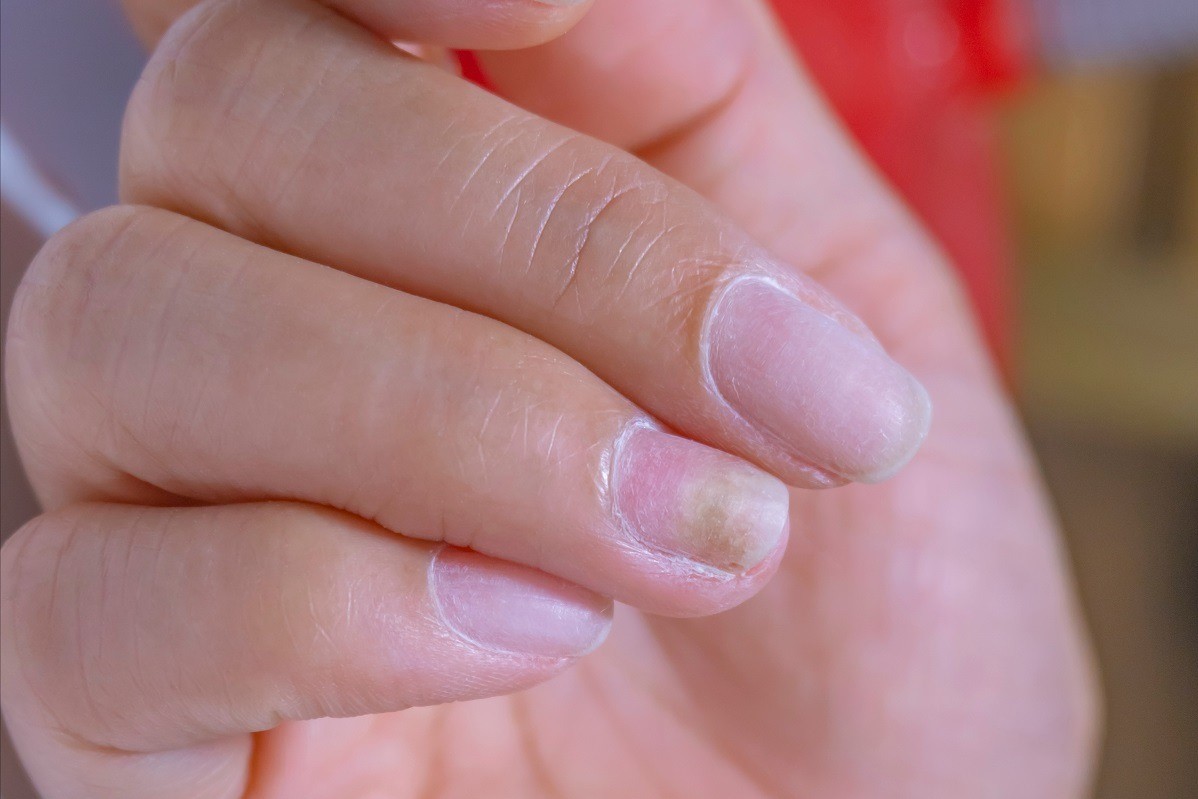
Nail fungus: what are they?
What is commonly referred to as ‘nail fungus’ is scientifically referred to as onychomycosis or nail mycosis: a common infection affecting the nails
When we speak of onychomycosis, we are medically referring to a nail disorder triggered by microorganisms called mycetes.
Onychomycosis can affect both fingernails and toenails indiscriminately; although, in general, only toenails are more affected as they are more prone to remain for prolonged periods of time in high humidity environments (shoes), thus favourable to the proliferation of microorganisms.
Both men and women can be affected by nail fungus, although experts believe that the male sex may be more favourable to the development of onychomycosis.
What are the causes and risk factors of nail fungus?
Nail fungus is very frequently caused by dermatophytes: fungi that, under normal conditions, are biologically in close contact with the body – and consequently also with the nails – of the patient.
In particular, dermatophytes nestle in warm, moist and dark areas of the body – at the toenails, to be precise – without, however, harming or causing any damage to the host organism.
Under certain and particular conditions, such as a moment of great stress or a sudden lowering of the immune defences, dermatophytes can however evolve and begin their uncontrolled multiplication, causing real infections.
Onychomycosis is very often found among dermatophyte infections
However, dermatophytes are not the only possible culprits of nail fungus: yeasts and moulds – such as candida, trichophyton, epidermophyton, aspergillus – can also be the cause of nail fungus.
Nail fungus is a fairly common infection that can affect anyone, regardless of age, gender or ethnicity
However, there are certain risk factors that increase the likelihood of contracting this type of infection.
- Diabetes: diabetic patients are quite prone to developing onychomycosis.
- Advanced age: the older one gets, the less microcirculation activity in the nails of the lower limbs, the greater the possibility of developing onychomycosis.
- Athlete’s foot: this is a disorder caused by a particularly aggressive and contagious fungus that generally affects this category of people.
- Psoriasis.
- Immune system disorders.
- Excessive sweating.
Habit of wearing shoes that are too tight and prevent proper circulation and ventilation of the area.
Nail fungus: recognising the symptoms
The symptoms resulting from a fungal infection of the nails are predominantly visual: to the eye, the nail affected by onychomycosis appears chromatically altered, turning a yellowish-white colour towards its tip.
In more severe cases, the nail may show dark brown, green or even black spots.
The surface of the affected nail is no longer smooth, but is jagged and – with the passage of time – may show some thickening that tends to crumble or flake off.
If not treated properly, onychomycosis will continue to worsen: the nail may start to produce a bad smell, crumble until onycholysis, the detachment of the nail itself, is reached.
In more severe and untreated cases of onychomycosis, the fungal infection of the nails may eventually affect even the healthy skin of the foot, gradually spreading to other areas of the body.
Nail fungus: diagnosis and appropriate treatment
If one is suspicious of having contracted a nail fungus infection, the general practitioner will certainly be able to recommend an appropriate treatment without the need to consult a specialist.
If the affected nails were those of the feet, you could alternatively consult a podiatrist.
Onychomycosis, besides being particularly contagious, is a rather difficult infection to eradicate.
The first step in treating nail fungus – as will be suggested by your doctor – will be treatment with antifungal drugs, either in the form of nail varnish or ointments, to be applied locally, or as tablets for oral use.
The antimycotics should act on the fungus, interrupting its proliferation and thus favouring – as it grows – the restoration of a healthy nail.
However, this type of treatment requires time and perseverance: it is estimated that the complete regrowth of the healthy nail takes from 9 months to a full year.
Surgery to completely remove the nail is only adopted if antifungal drugs have not given the desired results.
In this case, a diseased and now irretrievable nail will be completely removed to facilitate the elimination of the fungal infection.
How to prevent nail fungus
With regard to onychomycosis, the best cure is undoubtedly prevention.
Personal hygiene will be very important: keeping hands and feet thoroughly clean and dry at all times will help prevent the formation of moist environments with a high bacterial load.
Nails should always be kept short, clean and dry; they should always be trimmed and never torn to avoid the formation of lesions, micro-traumas and infections.
Preference should be given to materials that allow the feet to breathe freely, so as to avoid the formation of an environment favourable to fungal proliferation.
Read Also
Emergency Live Even More…Live: Download The New Free App Of Your Newspaper For IOS And Android
Nail Melanoma: Prevention And Early Diagnosis
Ingrown Toenail: What Are The Remedies?
Onychophagia: My Child Bites His Nails, What To Do?
Russia, Doctors Detect Mucormycosis In Covid-19 Patients: What Causes The Fungal Infection?
Parasitology, What Is Schistosomiasis?
Onychomycosis: Why Do Fingernails And Toenails Get Fungus?
What Is ‘Hand Foot And Mouth’ Disease And How To Recognise It
Dracunculiasis: Transmission, Diagnosis And Treatment Of ‘Guinea-Worm Disease’
Parasitoses And Zoonoses: Echinococcosis And Cystic Hydatidosis
Trichinosis: What It Is, Symptoms, Treatment And How To Prevent Trichinella Infestation
Toxoplasmosis: What Are The Symptoms And How Transmission Occurs
Toxoplasmosis, The Protozoan Enemy Of Pregnancies


